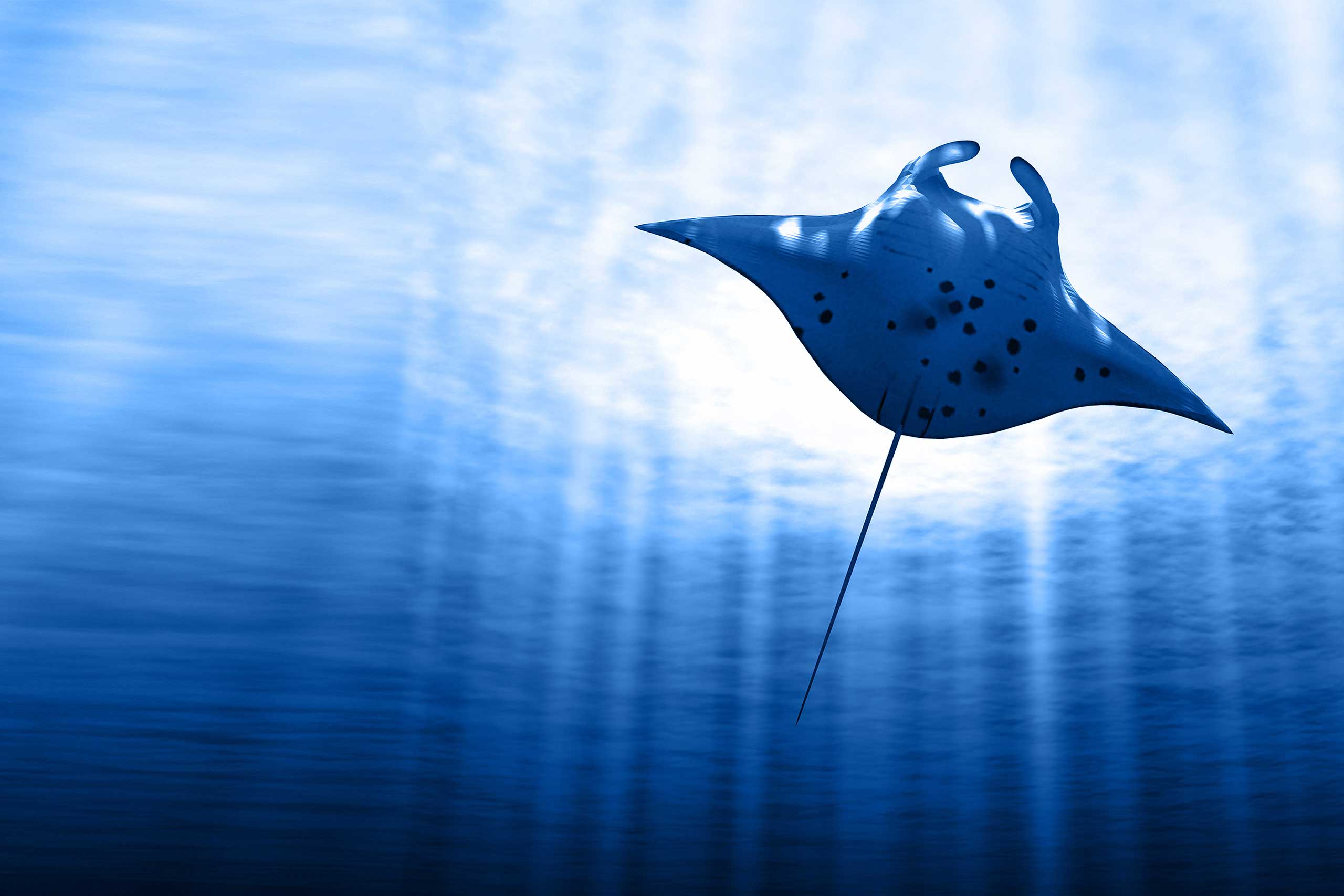About
Pengah Kecil is a steep-sided seamount that rises above the waves to form a small islandto the north of Rinca. This location makes it a popular stop on itineraries that also include a trek with the dragons, and during high season the site can become busy. Regularly washed by cool, nutrient rich waters from the south,Pengah Kecil boasts a stunning vista beneath the waves. The visibility can be poorer here than at other sites in Komodo, but persevere and you will be rewarded. The rocky walls are swamped by hard corals, soft corals, and sponges. Look carefully, as Pengah teems with macro life: bizarre and colourful nudibranchs and flatworms roam the reef, orang-utan crabs nestle amongst bubble corals, false stonefish drag themselves across the reef and octopus lurk in the nooks and crannies. On the western point of the island, the headland is comprised of boulders and craggy coral-covered pinnacles. Beyond, lies an immense plateau that is totally engulfed by coral cover. In the afternoons, the light illuminates this area in a spectacular fashion. Hawksbill turtles are regularly found chomping on the staghorn corals, alongside banded sea snakes, and schools of fusiliers harassed by giant and bluefin trevally. Schools of bumphead parrotfish are common, and huge dogtooth tuna patrol the drop off. Keep an eye on the blue, as large rays often fly past—mantas, mobulas and eagle rays. With so much going on in the shallows, you won’t want to leave your safety stop! But take note—Pengah is a current swept site, and the tide splits around the rock creating very strong rips. When the current is weakest, it is possible to jump in up-current and drift around the rock. But even with a weak current, strong down currents can form at the corners, and divers should be experienced in these conditions. This site is usually dived in the lee, zig-zagging to-and-fro between the current flowing around either side of the rock. As the tide swings around, the lee will also move. Occasionally sweeping currents and swirling eddies can be seen from the surface. The site is very dynamic, and it is essential to seek advice from an experienced guide who is able to read the conditions above and below the water. Strong currents can make this site unsuitable for inexperienced divers, and even render it impossible to dive.
Whitetip Reef
The whitetip reef shark (Triaenodon obesus) is a species of requiem shark, family Carcharhinidae, and the only member of its genus. A small shark usually not exceeding 1.6 m (5.2 ft) in length, this species is easily recognizable by its slender body and short but broad head, as well as tubular skin flaps beside the nostrils, oval eyes with vertical pupils, and white-tipped dorsal and caudal fins. One of the most common sharks found on Indo-Pacific coral reefs, the whitetip reef shark occurs as far west as South Africa and as far east as Central America. It is typically found on or near the bottom in clear water, at a depth of 8–40 m (26–131 ft). During the day, whitetip reef sharks spend much of their time resting inside caves. Unlike other requiem sharks, which rely on ram ventilation and must constantly swim to breathe, this shark can pump water over its gills and lie still on the bottom. At night, whitetip reef sharks emerge to hunt bony fishes, crustaceans, and octopus in groups, their elongate bodies allowing them to force their way into crevices and holes to extract hidden prey. Individuals may stay within a particular area of the reef for months to years, time and again returning to the same shelter. This species is viviparous, in which the developing embryos are sustained by a placental connection to their mother. One of the few sharks in which mating has been observed in the wild, receptive female whitetip reef sharks are followed by prospective males, which attempt to grasp her pectoral fin and maneuver the two of them into positions suitable for copulation. Females give birth to one to six pups every other year, after a gestation period of 10–13 months. Whitetip reef sharks are rarely aggressive towards humans, though they may investigate swimmers closely. However, spear fishers are at risk of being bitten by one attempting to steal their catch. This species is caught for food, though ciguatera poisoning resulting from its consumption has been reported. The IUCN has assessed the whitetip reef shark as Near Threatened, noting its numbers are dwindling due to increasing levels of unregulated fishing activity across its range. The slow reproductive rate and limited habitat preferences of this species renders its populations vulnerable to overfishing.
Bleaching
Bleaching occurs when corals expel their symbiotic zooxanthellae - pigmented, algae-like protozoa that live within the coral's cells. High temperature, pollution or other stresses can cause the coral to expel its zooxanthellae, leading to a lighter or complete loss of color.
Recent Activity
naneng setiasih
conducted a manta survey. - at Komodo National Park
0 mantas at Pengah Kecil on 09 Feb
Baby shark, data recorded by Laura

